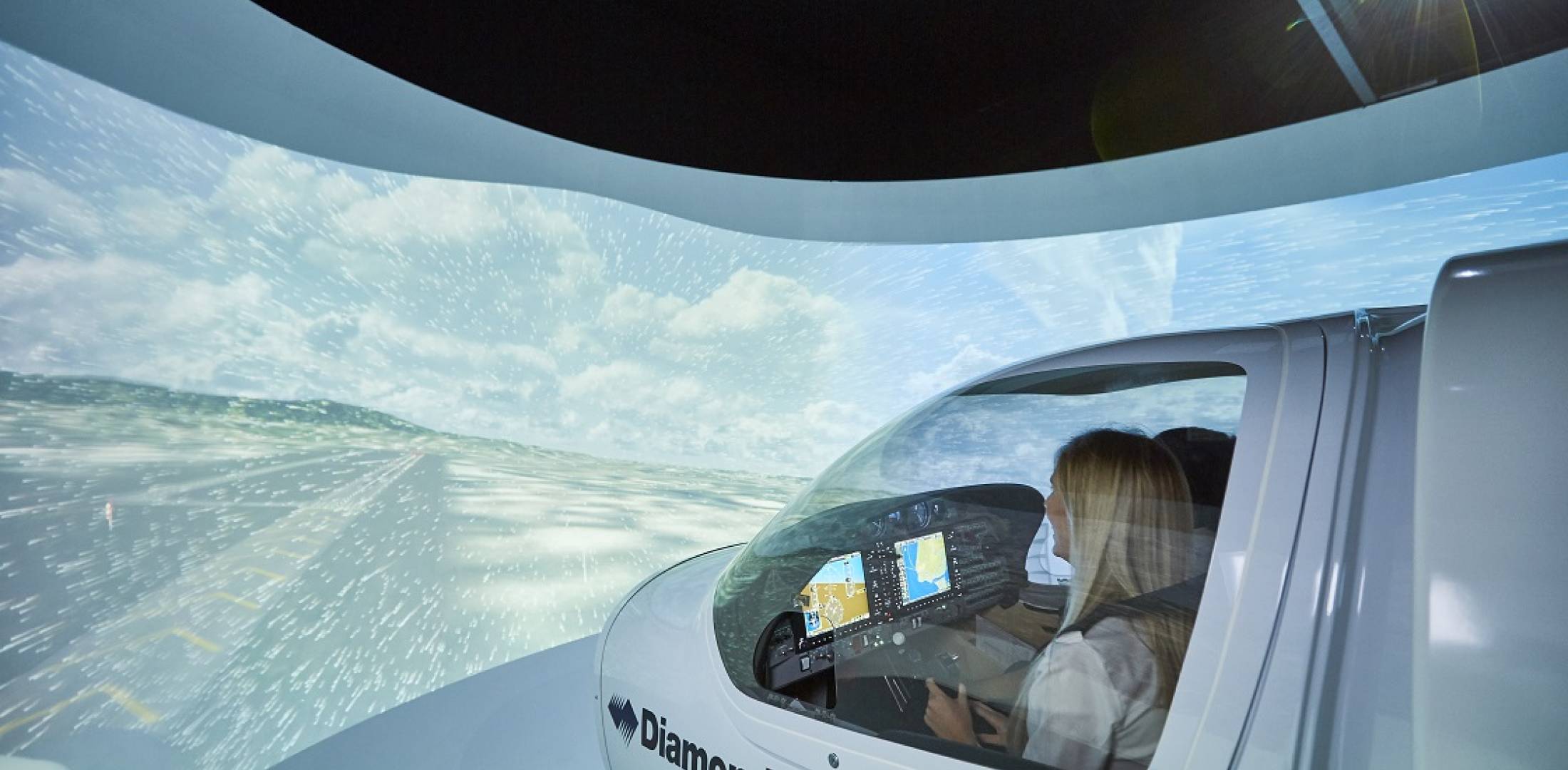L3Harris Technologies plans to open its newly-expanded UK pilot training center at Cranfield this month. The extensive upgrade to existing facilities is part of the company’s strategy to support airlines in providing more efficient ways to train badly-needed new pilots.
The improved training center, which is part of the aerospace facilities at the UK's renowned Cranfield University, now includes more classrooms for ground school training and a trio of Diamond DA42 flight simulators. The simulators will give ab initio trainees what L3 calls an ultra-realistic learning experience, while also boosting capacity for safely conducting exercises in simulators alongside airborne flight training. At the same time, the company is adding EASA flight training to the curriculum of its flight school in Sanford, Florida, to allow students to take advantage of flying conditions and lower costs available in the U.S. before completing twin-engine training, instrument ratings, and licensing in the UK.
Prior to Covid, airlines already faced the prospect of a shrinking pilot workforce, and the pandemic has worsened this situation, according to L3Harris sales and marketing vice president Robin Glover-Faure. “The industry has probably seen the retirement bubble accelerate by around three or four years, and in the past two years there has been about a 50 percent reduction in pilot training, due in part to the stresses of the pandemic. These factors combined are causing an unwinding,” he told AIN.
In the short term, airlines have attempted to spend their way out of the problem by paying large bonuses to attract flight crew. But Glover-Faure feels carriers would do better to invest in a longer-term strategic approach to restoring the pipeline of new pilots. In some cases, he said, the huge bonuses available actually have made the situation worse by luring instructors away from flight schools.
As much as airlines need more pilots, post-Covid business conditions continue to batter their balance sheets, making it hard to find the funds required to ease the worsening shortage. One option is to guarantee loans of the $100,000 or so that Glover-Faure estimates that getting a trainee into an airline right seat job requires. But while banks advance the funds, the amount goes on the carrier’s balance sheet as a liability. “But airlines are going to have to address the reality of this situation,” he said. “It is not an option to just keep paying $50,000 sign-on bonuses.”
Meanwhile, L3Harris is also investing in using data analytics to help pilots fly more safely and sustainably by burning less fuel and emitting less carbon. It has established a new division in its commercial aviation training business to concentrate on those improvements.
“We are making much better use of data from both simulators and aircraft, turning this data into play-back insights [during training sessions] into how to achieve efficiencies in approaches to airports and energy management, and in managing situations like a single-engine failure after takeoff,” said Glover-Faure. “Until recently, we’ve had a feast of data but a famine of insight.”
With the air transport sector now committed to achieving net-zero carbon objectives, it is imperative for the flight crew to understand how they can contribute. In L3Harris’s view, building those considerations into the syllabus from the start of ab initio training will embed them in their mindset from the start.
